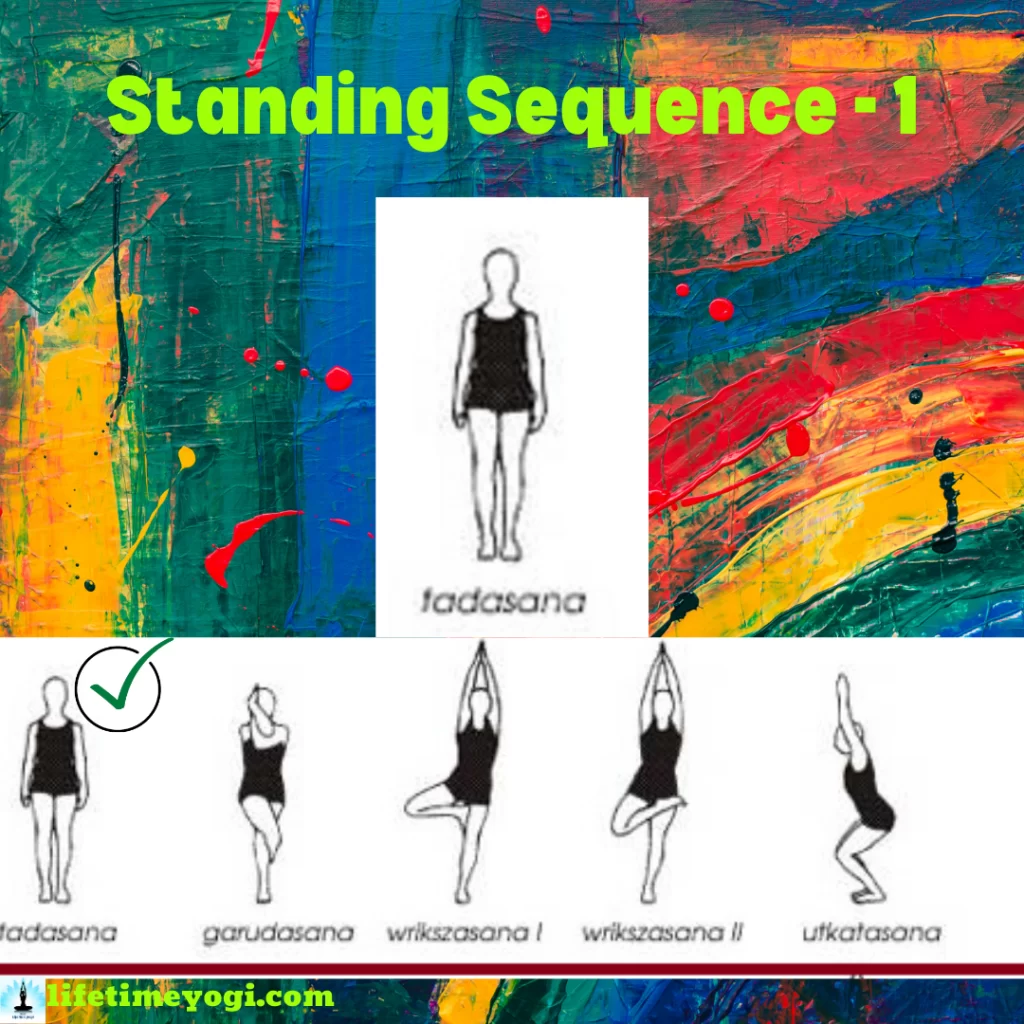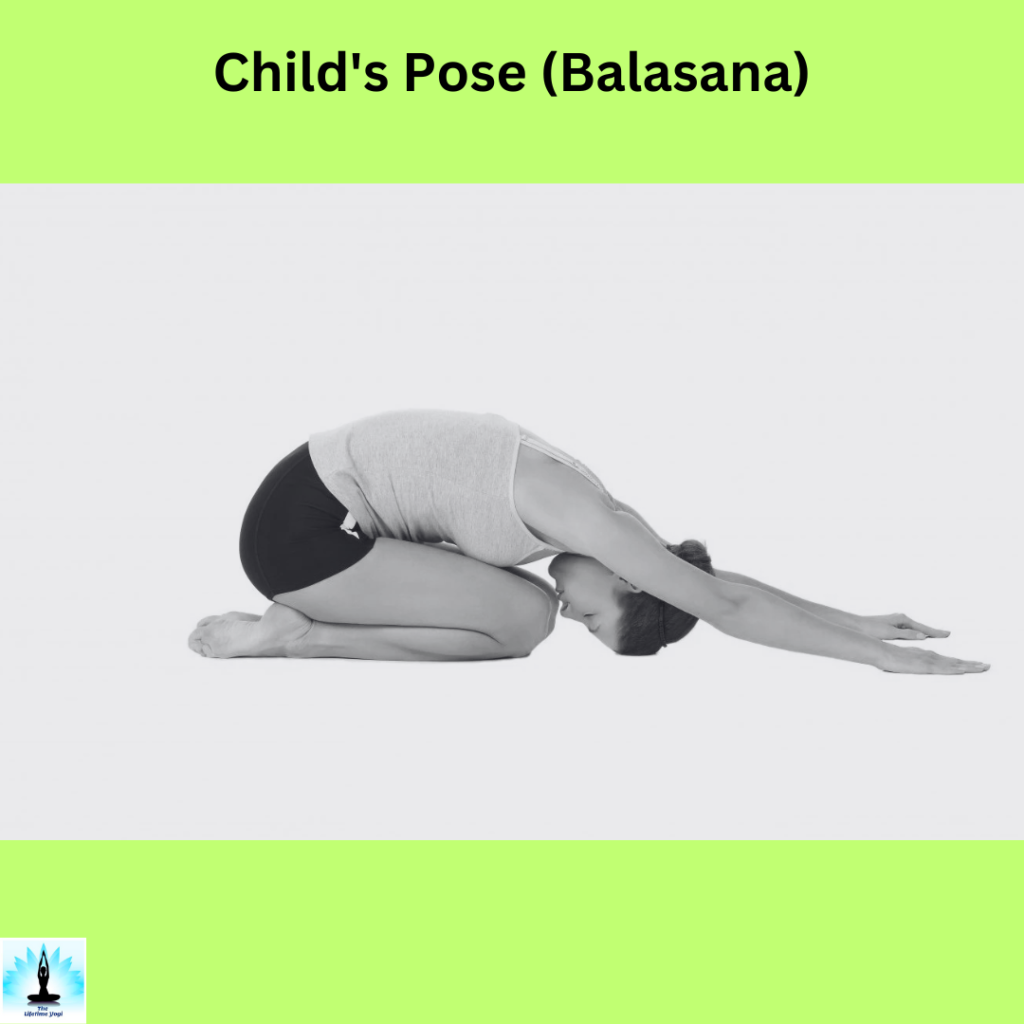Table of Contents
Introduction – Yoga Poses to Help Keep Your Joints Healthy as You Age
As we age, it becomes increasingly important to take care of our joints to maintain mobility and overall well-being. Regular exercise, especially yoga, can play a significant role in keeping joints healthy and supple. Yoga not only provides gentle movement and stretches but also promotes balance, strength, and flexibility. In this article, we will explore five gentle yoga poses that can help keep your joints healthy as you age, allowing you to maintain an active and fulfilling lifestyle.
Mountain Pose (Tadasana)

Begin your practice with the foundational pose of Tadasana or Mountain Pose. This pose helps improve posture, balance, and joint alignment. Stand tall with your feet hip-width apart, grounding evenly through all four corners of your feet. Engage your leg muscles, lengthen your spine, and relax your shoulders. Allow your breath to flow naturally as you hold the pose for several breaths. This gentle pose helps to bring awareness to your body, promoting joint stability and proper alignment.
Cat-Cow Pose (Marjaryasana-Bitilasana)

Cat-Cow Pose is a fluid movement that stretches and mobilizes the spine, shoulders, and hips. Start on all fours with your wrists aligned under your shoulders and knees under your hips. Inhale as you arch your back, lifting your tailbone and chest while gazing upward (Cow Pose). Exhale as you round your spine, tucking your tailbone and dropping your head (Cat Pose). Repeat this fluid movement several times, synchronizing your breath with each movement. Cat-Cow Pose helps to increase the flexibility and range of motion in your spine and joints, promoting their health and mobility.
Child’s Pose (Balasana)

Child’s Pose is a restorative posture that provides a gentle stretch for the hips, knees, and ankles while promoting relaxation. Begin by kneeling on the floor and gently lower your hips toward your heels, keeping your toes together and knees apart. Walk your hands forward, allowing your forehead to rest on the mat or a prop. Breathe deeply as you sink into the pose, feeling a gentle stretch in your lower back and hips. Child’s Pose helps to release tension in the joints, relieve stress, and improve circulation, keeping your joints healthy and nourished.
Bridge Pose (Setu Bandhasana)

Bridge Pose is an excellent pose for strengthening the muscles around the hips, knees, and ankles while opening the chest and shoulders. Lie on your back with your knees bent and feet hip-width apart. Press your feet into the mat as you lift your hips, engaging your glutes and core. Keep your thighs parallel and interlace your fingers beneath your pelvis. Hold the pose for a few breaths, feeling the stretch in your chest and the strength in your lower body. Bridge Pose helps to improve joint stability, increase hip flexibility, and alleviate lower back pain.
Tree Pose (Vrikshasana)

Tree Pose is a balancing pose that enhances stability and strengthens the muscles surrounding the knees, ankles, and hips. Begin by standing tall with your feet hip-width apart. Shift your weight onto your left foot and bring the sole of your right foot to rest on your left inner thigh, above or below the knee. Find your balance and place your hands in a prayer position at your heart center. Hold the pose for several breaths and then switch sides. Tree Pose challenges your balance and improves joint stability while promoting focus and concentration.
FAQs – 5 Gentle Yoga Poses to Help Keep Your Joints Healthy as You Age
Can I practice these yoga poses if I have joint pain or arthritis?
Yes, these gentle yoga poses can be beneficial for individuals with joint pain or arthritis. However, it is important to listen to your body and modify the poses as needed. You may want to consult with a qualified yoga instructor or a healthcare professional for guidance on modifications that suit your specific needs.
How often should I practice these yoga poses to see results?
Consistency is key when practicing yoga for joint health. Aim to practice these poses at least two to three times per week. You can gradually increase the frequency and duration as you become more comfortable and experienced. Remember to start slowly and listen to your body, allowing for rest and recovery as needed.
Can these yoga poses help with joint flexibility and mobility?
Yes, these gentle yoga poses are designed to improve joint flexibility and mobility. Regular practice can help increase the range of motion in your joints and promote overall joint health. However, it is important to avoid pushing yourself too hard and to respect your body’s limitations to prevent injuries.
Are these yoga poses suitable for beginners?
Yes, these yoga poses are generally suitable for beginners. They are gentle and accessible, focusing on promoting joint health and flexibility. However, it is recommended to start with guidance from a qualified yoga instructor who can provide proper alignment cues and modifications tailored to your individual needs.
Can these yoga poses be practiced by older adults?
Absolutely! These gentle yoga poses are particularly beneficial for older adults who want to maintain joint health as they age. However, it’s important to start with caution and gradually build up the intensity and duration of your practice. If you have any concerns or specific health conditions, it is advisable to consult with a healthcare professional before starting any new exercise routine.
Can these yoga poses be done if I have limited mobility or are wheelchair-bound?
Yes, many of these poses can be modified to suit individuals with limited mobility or those who are wheelchair-bound. For example, you can practice seated variations of the poses or use props for support. It is recommended to work with an experienced yoga instructor who can provide appropriate modifications and guidance based on your specific needs and abilities.
Can these yoga poses alleviate joint pain?
While yoga can help alleviate joint pain for some individuals, it may not be a cure-all for everyone. The poses in this article are gentle and can promote joint health and flexibility, but it’s important to understand and address the underlying causes of joint pain. If you experience persistent or severe joint pain, it is advisable to seek medical advice to determine the best course of action for your specific condition.
Is Yoga Good for Aging Joints?
Yes, yoga is highly beneficial for aging joints. As we age, our joints tend to become stiffer and less flexible. Regular yoga practice can help counteract this by gently stretching and mobilizing the joints, promoting flexibility and reducing stiffness. The gentle movements and poses in yoga help to improve joint lubrication, increase blood flow to the joints, and strengthen the muscles surrounding them. This can enhance joint stability and support, reducing the risk of injury and promoting better overall joint health.
Does Yoga Strengthen Joints?
Yes, yoga can help strengthen joints. When we do yoga, we move our bodies in different poses and positions. These poses help stretch and strengthen our muscles, which support our joints. Strong muscles help protect our joints and make them more stable. Yoga also helps improve flexibility, which means our joints can move more easily and smoothly. When we do yoga, we take care of our joints by giving them exercise and making them stronger. So, yes, yoga is great for strengthening our joints and keeping them healthy!
How Can I Restore My Joints Naturally?
To restore your joints naturally, there are a few things you can do. First, it’s important to eat healthy foods that are good for your joints, like fruits, vegetables, and foods rich in omega-3 fatty acids, such as fish or nuts. Drinking plenty of water is also important to keep your joints hydrated.
Exercise is another great way to help your joints. Activities like swimming, biking, or doing gentle exercises like yoga can help keep your joints moving and strong. Make sure to get enough rest and sleep, as it helps your body heal and restore itself.
Finally, listen to your body and give it the rest it needs if you feel any pain or discomfort in your joints. By taking care of yourself through healthy eating, exercise, rest, and listening to your body, you can naturally restore and keep your joints healthy.
What Heals Joints Faster?
When our joints are injured or hurt, there are a few things that can help them heal faster. One important thing is to rest the injured joint and avoid putting too much pressure on it. This gives the joint time to heal. Applying ice to the injured area can help reduce swelling and relieve pain. It’s also important to eat healthy foods that are good for our bodies, like fruits and vegetables, as they provide the nutrients our joints need to heal. Drinking plenty of water is important too, as it helps keep our joints hydrated.
Conclusion
As we age, it’s crucial to prioritize joint health to maintain an active and fulfilling lifestyle. Incorporating gentle yoga poses into your daily routine can play a significant role in keeping your joints healthy and mobile. Remember, it’s always recommended to consult with a healthcare professional or a qualified yoga instructor before starting any new exercise program, especially if you have pre-existing medical conditions or concerns.
References
- Jain 2015, p. 14.
- ^ Singleton 2010, p. 28.
- ^ Hemachandra‘s Yogashastra 1.8–9
- ^ Mallinson & Singleton 2017, pp. 385–387.
- Mehta 1990, pp. 22–23.
- “Yoga Health Benefits: Flexibility, Strength, Posture, and More”
- Singh, T. D. (2005). “Science and Religion: Global Perspectives, 4 – 8 June 2005, Philadelphia | Hinduism and Science” (PDF). Metanexus Institute. Archived (PDF) from the original on 25 November 2018.
- ^ Swami Kuvalayananda; Shukla, S. A., eds. (December 2006). Goraksha Satakam. Lonavla, India: Kaivalyadhama S. M. Y. M. Samiti. pp. 37–38. ISBN 81-89485-44-X.
